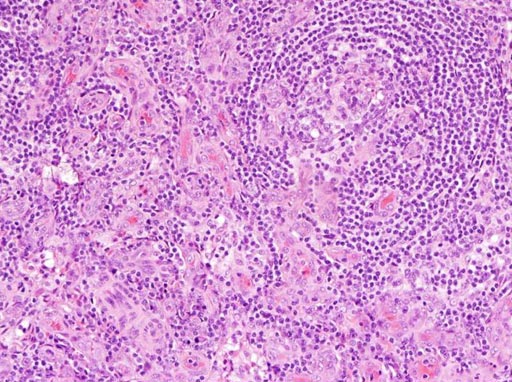Diagnostic Criteria for Multicentric Castleman Disease Published
By LabMedica International staff writers
Posted on 28 Feb 2017
An international panel of experts in pediatric and adult hematopathology, hematology/oncology, rheumatology, immunology, and infectious diseases has established the first set of diagnostic criteria for idiopathic multicentric Castleman disease (iMCD).Posted on 28 Feb 2017
Multicentric Castleman disease involves hyperactivation of the immune system, excessive release of proinflammatory cytokines, proliferation of immune cells (B-cells and T-cells), and multiple organ system dysfunction. Approximately 1,200 patients are diagnosed with iMCD each year in the United States. The disorder can occur in patients of any age, and about 35% of iMCD patients die within five years of diagnosis; 60% die within 10 years. In 2014, siltuximab, an anti-IL6 monoclonal antibody used to treat cancer, became the first [U.S.] Food and Drug Administration-approved iMCD therapy based on results from an international, randomized controlled trial in which 34% of patients had a complete or partial response to the drug compared to 0% on placebo.

Image: A photomicrograph of lymph node tissue from a person with, idiopathic multicentric Castleman disease. Image shows increased number of blood vessels and smaller germinal centers where immune cells mature in the lymph node, which are two of the pathology features needed to make the diagnosis (Photo courtesy of Dr. David Fajgenbaum, University of Pennsylvania).
Castleman disease must be distinguished from other disorders that can demonstrate "Castleman-like" lymph node features, including reactive lymph node hyperplasia, autoimmune disorders, and malignancies. Accurate diagnosis is challenging, as no standard diagnostic criteria or diagnostic biomarkers currently exist, and there is significant overlap with malignant, autoimmune, and infectious disorders. To correct the lack of diagnostic criteria, an international working group comprising 34 pediatric and adult pathology and clinical experts in iMCD and related disorders from eight countries, including two physicians that are also iMCD patients, was convened to establish iMCD diagnostic criteria. The working group reviewed data from 244 cases, met twice, and refined criteria over 15 months (June 2015 - September 2016).
The working group decided that for a diagnosis of iMCD to be made, two major criteria and at least two of 11 minor criteria are met, including at least one laboratory abnormality, such as anemia or elevated C-reactive protein in the blood. Additionally, several diseases with similar clinical presentation to iMCD must be excluded, such as another sub-type of CD called HHV-8-associated multicentric CD.
"Previously, patients had to hope their doctors were familiar with the Castleman disease medical literature in order for them to even consider an iMCD diagnosis," said first author David Fajgenbaum, assistant professor of medicine at the University of Pennsylvania. "Then, for the doctors considering the diagnosis, actually diagnosing it was very difficult. Now, with these criteria, doctors will know exactly what to look for and what to check off to feel confident about a diagnosis. The new criteria will accelerate time to diagnosis and, more importantly, administration of life-saving treatments for iMCD patients."
"I feel so pleased and optimistic that we are finally turning the tide against this disease," said Dr. Fajgenbaum. "I have heard of too many patients diagnosed with the disease only after they died and underwent an autopsy, and hopefully this will help doctors to diagnose it before it is too late."
Details of the diagnostic criteria were published in the January 13, 2017, online edition of the journal Blood.




 assay.jpg)








